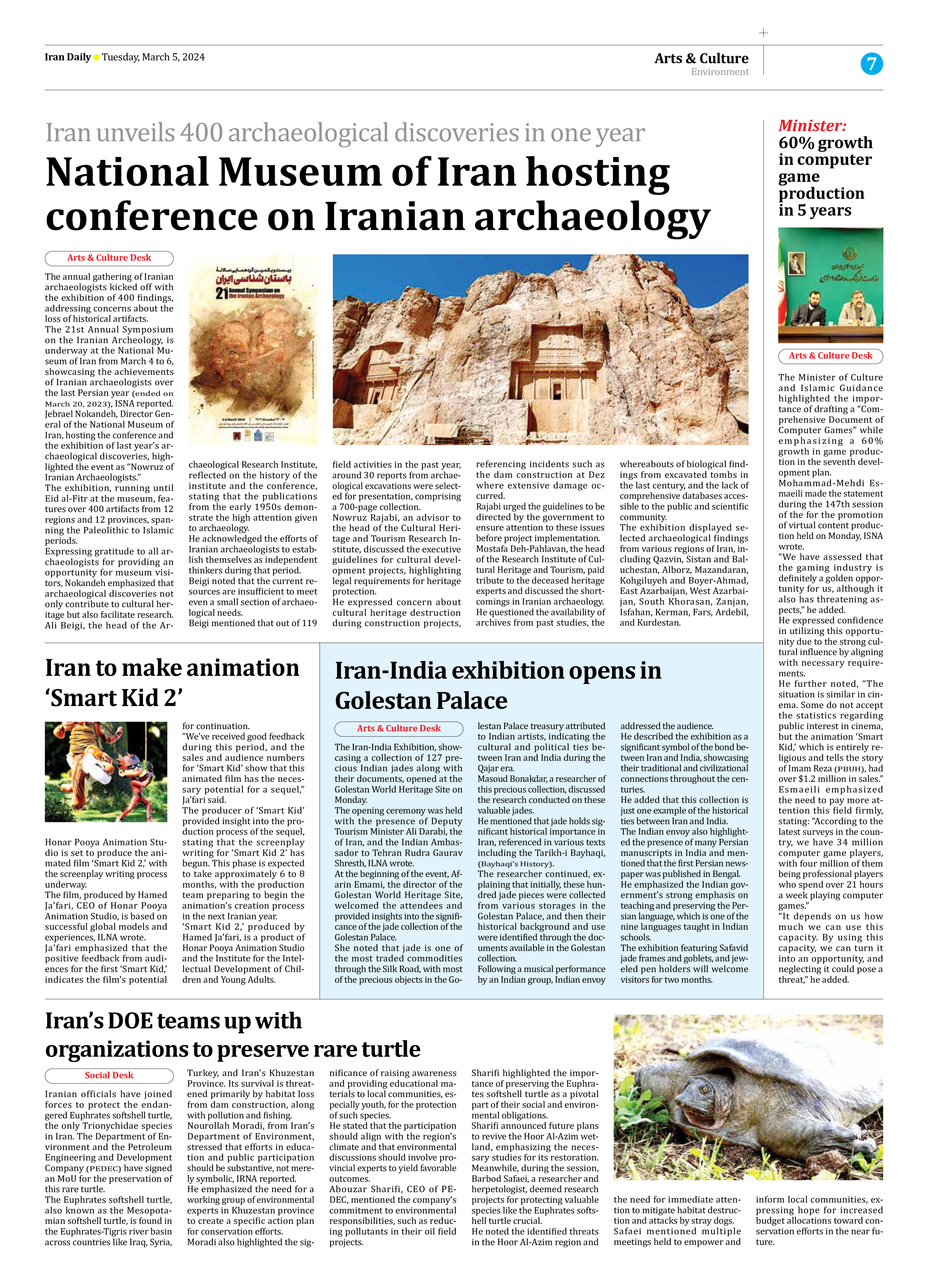
Iran unveils 400 archaeological discoveries in one year
National Museum of Iran hosting conference on Iranian archaeology
The annual gathering of Iranian archaeologists kicked off with the exhibition of 400 findings, addressing concerns about the loss of historical artifacts.
The 21st Annual Symposium on the Iranian Archeology, is underway at the National Museum of Iran from March 4 to 6, showcasing the achievements of Iranian archaeologists over the last Persian year (ended on March 20, 2023), ISNA reported.
Jebrael Nokandeh, Director General of the National Museum of Iran, hosting the conference and the exhibition of last year’s archaeological discoveries, highlighted the event as “Nowruz of Iranian Archaeologists.”
The exhibition, running until Eid al-Fitr at the museum, features over 400 artifacts from 12 regions and 12 provinces, spanning the Paleolithic to Islamic periods.
Expressing gratitude to all archaeologists for providing an opportunity for museum visitors, Nokandeh emphasized that archaeological discoveries not only contribute to cultural heritage but also facilitate research.
Ali Beigi, the head of the Archaeological Research Institute, reflected on the history of the institute and the conference, stating that the publications from the early 1950s demonstrate the high attention given to archaeology.
He acknowledged the efforts of Iranian archaeologists to establish themselves as independent thinkers during that period.
Beigi noted that the current resources are insufficient to meet even a small section of archaeological needs.
Beigi mentioned that out of 119 field activities in the past year, around 30 reports from archaeological excavations were selected for presentation, comprising a 700-page collection.
Nowruz Rajabi, an advisor to the head of the Cultural Heritage and Tourism Research Institute, discussed the executive guidelines for cultural development projects, highlighting legal requirements for heritage protection.
He expressed concern about cultural heritage destruction during construction projects, referencing incidents such as the dam construction at Dez where extensive damage occurred.
Rajabi urged the guidelines to be directed by the government to ensure attention to these issues before project implementation.
Mostafa Deh-Pahlavan, the head of the Research Institute of Cultural Heritage and Tourism, paid tribute to the deceased heritage experts and discussed the shortcomings in Iranian archaeology.
He questioned the availability of archives from past studies, the whereabouts of biological findings from excavated tombs in the last century, and the lack of comprehensive databases accessible to the public and scientific community.
The exhibition displayed selected archaeological findings from various regions of Iran, including Qazvin, Sistan and Baluchestan, Alborz, Mazandaran, Kohgiluyeh and Boyer-Ahmad, East Azarbaijan, West Azarbaijan, South Khorasan, Zanjan, Isfahan, Kerman, Fars, Ardebil, and Kurdestan.







